Abstract:
This seminar was divided into two projects. One was to propose a design for the IaaC main building rooftop, and the other was to select, analyze and prototype connection details of the selected proposal to be built at the IaaC main building rooftop. The connections which were allotted to this group was the “timber elements to itself” connection detail, as well as the “beam to the cable” connection detail. The structural analysis had been performed using Karamba (plugin for Grasshopper).
Structural Systems:
Introduction
From the selected proposal, we were given two connections to work with. The groups within itself was divided to analyse and design the two different types of connection details and later combine them to check the final outcome.
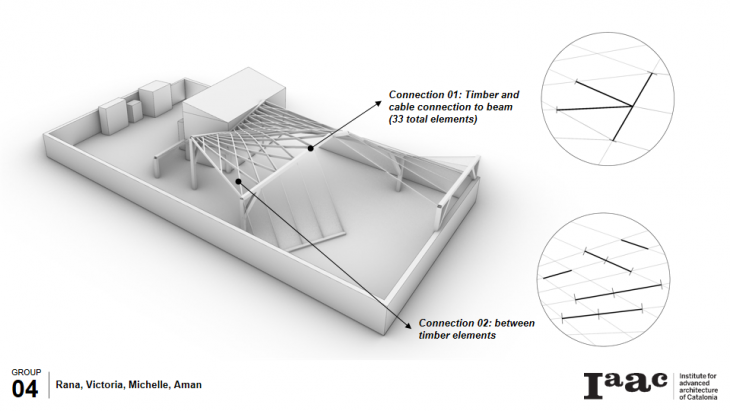
First Prototype Objectives
- Allow for a single connection for custom angles of the element.
- Make efficient use of materials and time – Reduce the use of metal.
- Balance forces between the cable and timber elements in tension.
- Optimize the joints based on structural analysis.
First Prototype Strategy
The initial idea was to create a connection that divides itself into two parts and connects with the help of the Japanese joinery technique, along which a hole can be achieved (as seen in the diagram below), to create an opening for the strap to be wrapped around, for the cable to be connected to the beam.
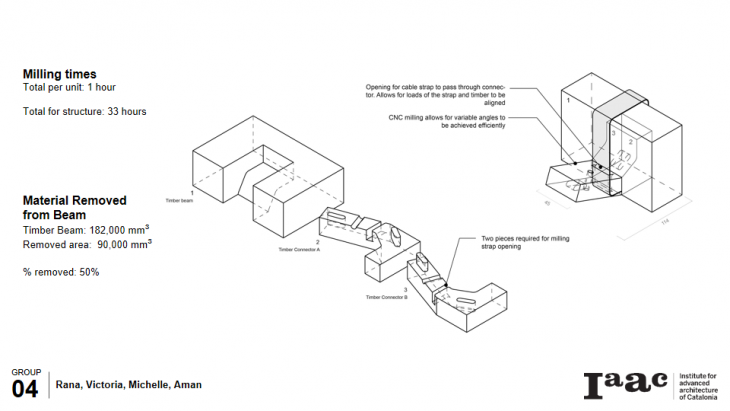
First Prototype Findings
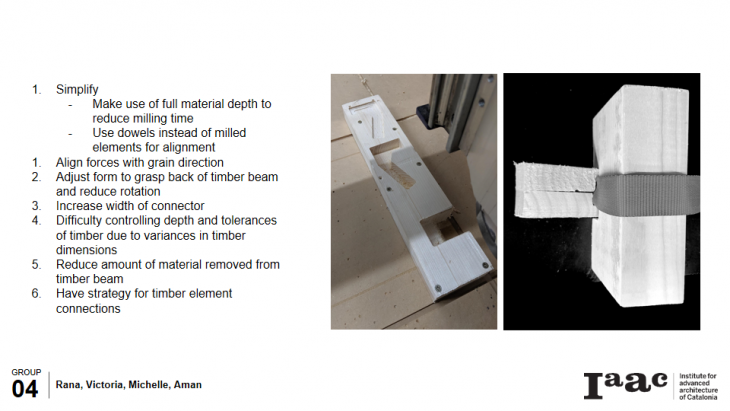
Timber Connection Options
We were testing different options for the joint connection and how the elements can “sit” on the platform when they connect. There were various complexities when analysing the detail, but with a few prototype tests, we were able to connect them properly.

Second Prototype Objectives
- Reduce time and complexity
- Bear timber elements on each other and cable strap
- Use of plywood for its structural capacity in two directions
- Connection of timber elements to the connector
Second Prototype Strategy
In order to reduce the time of the fabrication, as well as optimize the connection, the stacked approach was taken to connect strips of the connection into one entity, from which the strap will be attached at the edge of the connection and wrapped around the beam to connect the cable anchor.
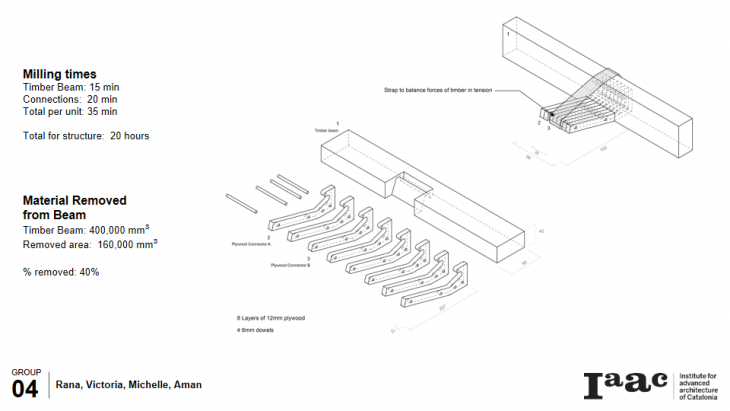
Second Prototype Findings
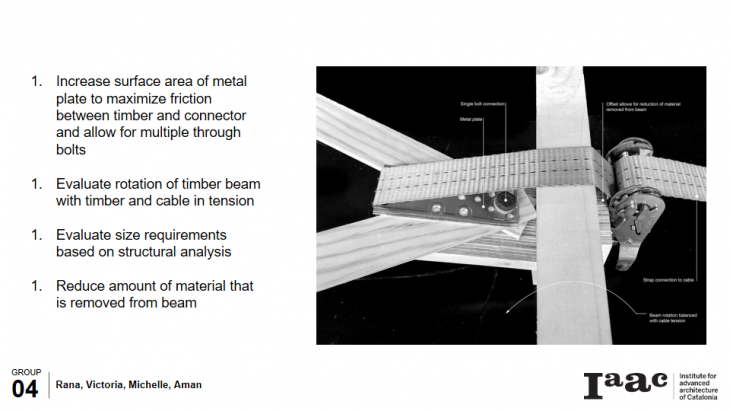
Prototype Diagram
This diagram shows the final prototype which was tested to analyse all the details and how the elements rests onto the connection joint made.

Prototype Details
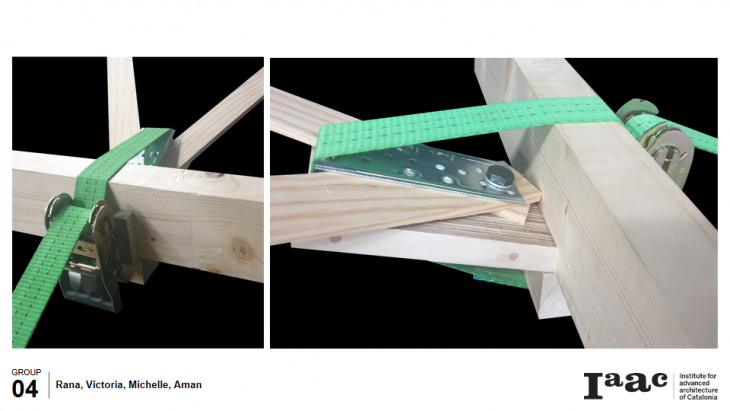
Analysis Setup
Since we figured that there were elements with different angles that were intersecting with the beam, tests for the forces of each element were carried out to see if there were any variations of forces acting on the beam, to which the connections would have to be altered differently at different places.
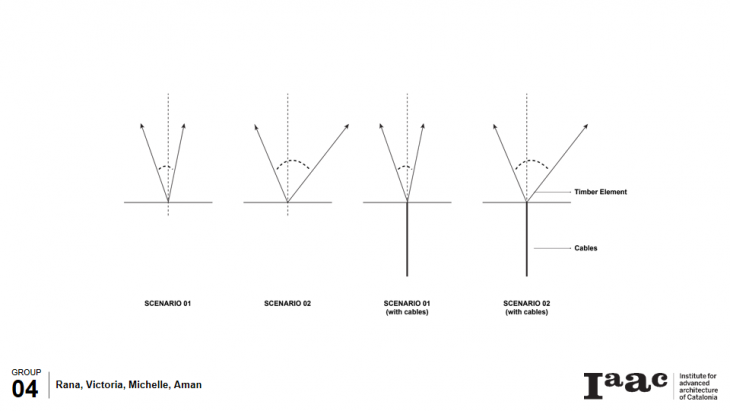
4 Different scenarios were identified from the proposal and were listed below as an illustration.
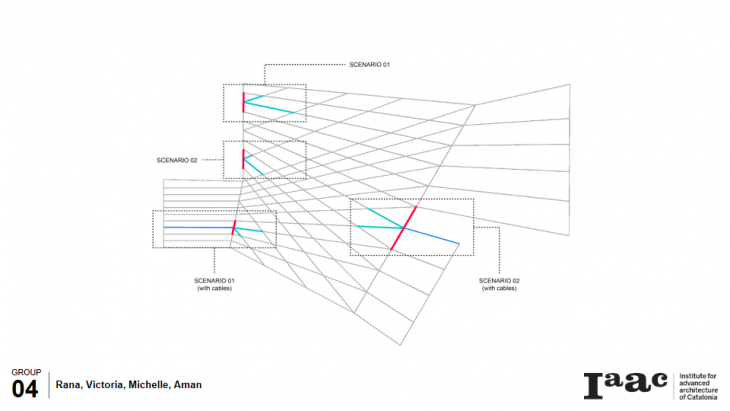
Karamba Analysis (Tension & Compression)
From the illustration below, you can see the tension forces of the elements as well the compression forces of certain elements. It was important to analyse which part of the model was acting on which force.
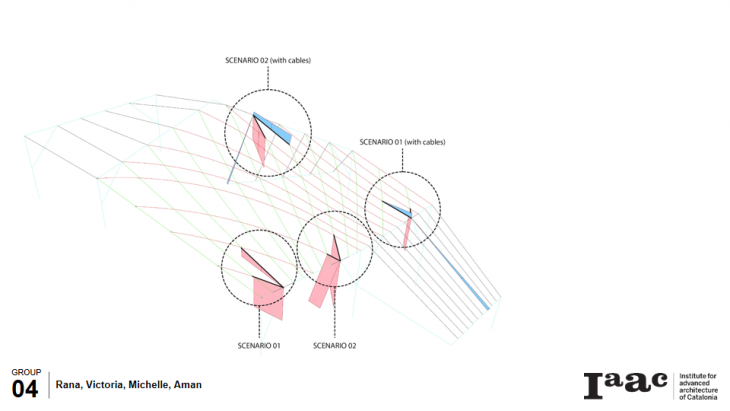
Beam Cross Section Analysis
Since the connection which we were working on required a notch, it was certain that parts of the beam would have to be cut off, meaning low volume to work with. Keeping this in mind, we checked the cross section of the beam when the volume is reduced from a 0% cut to 75% cut off from parts of the beam.
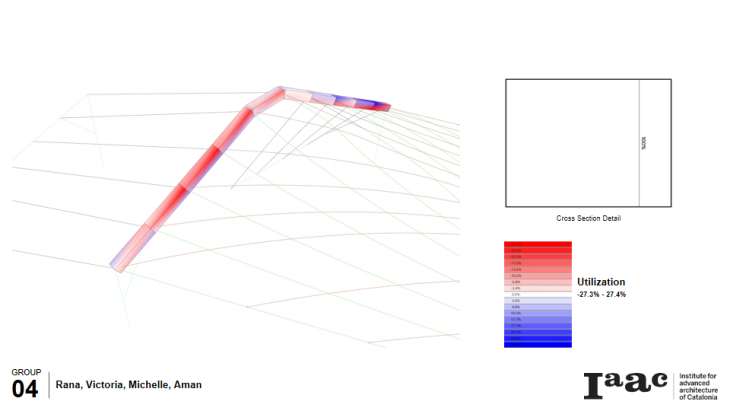
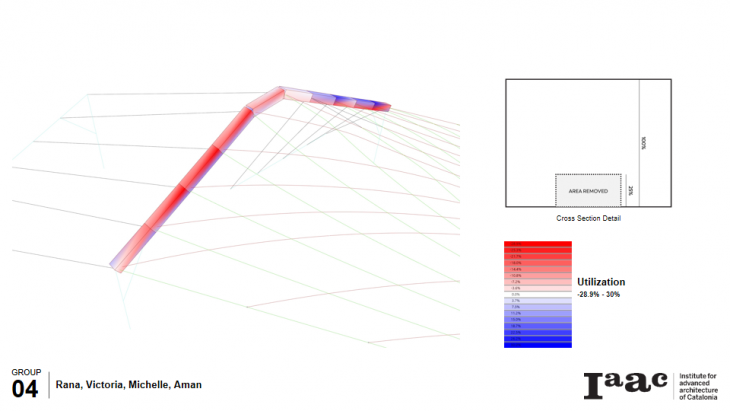
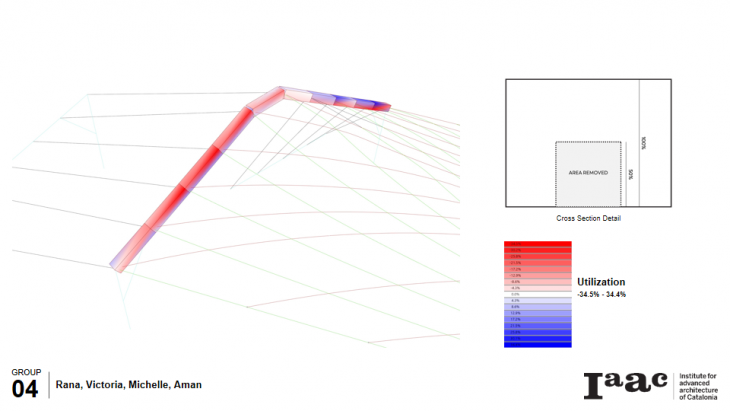
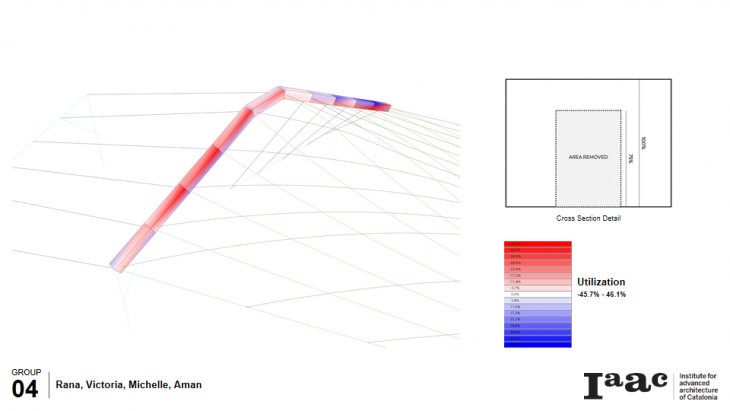
Joint Connections
For Timber to Timber element joint connection, several references had been checked before proposing a design.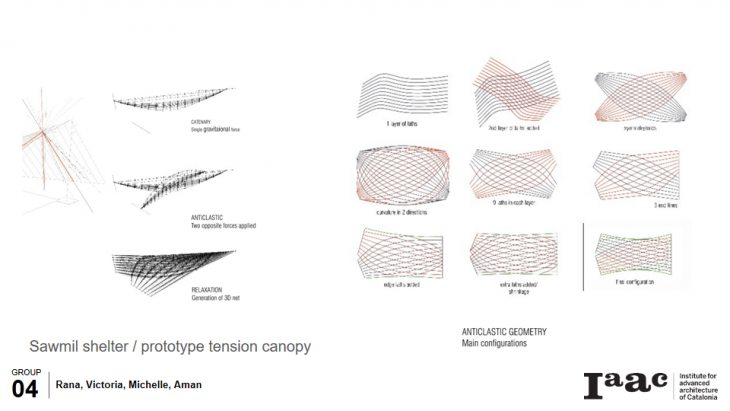
Types of Joints
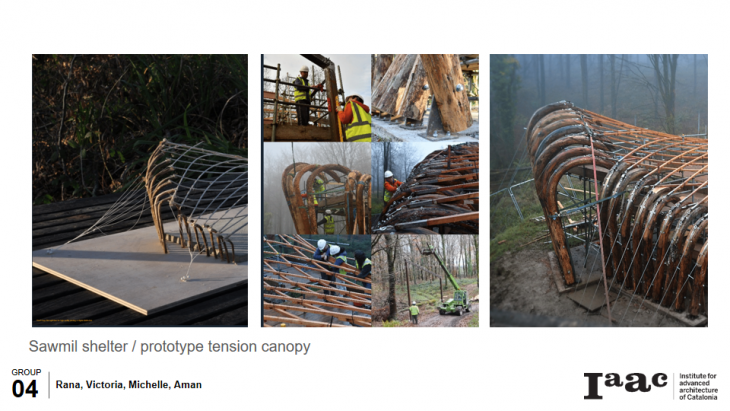
Comparison
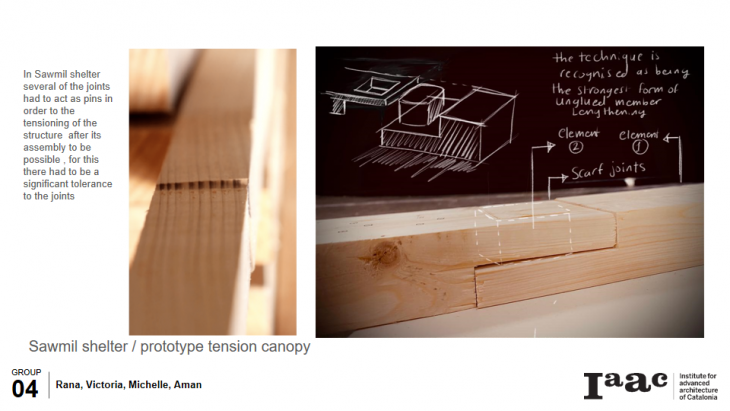
Joint Prototype Findings
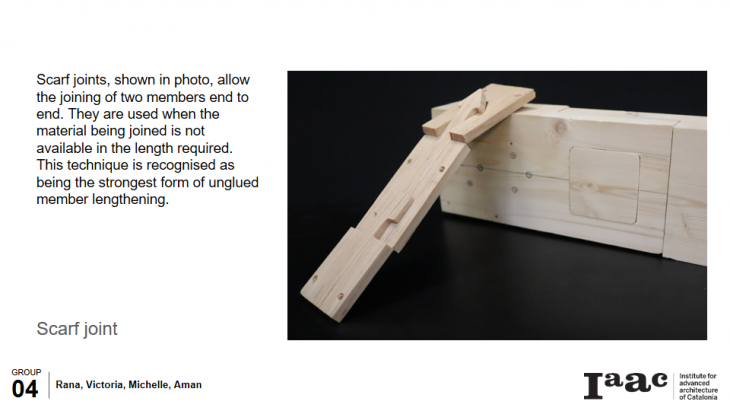
Joint Connection Options
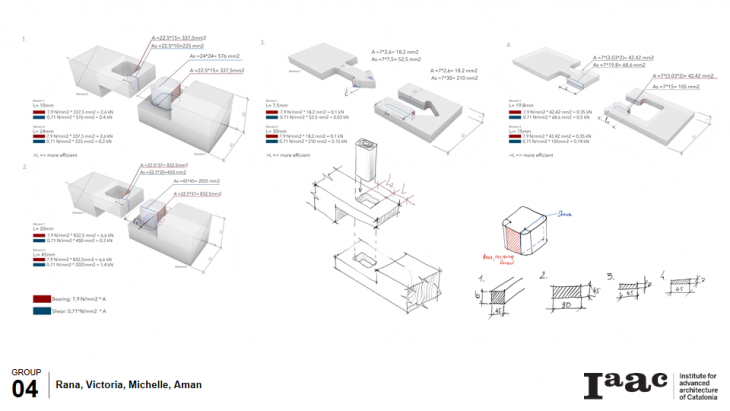
Joint Assembly Video
Credits
IaaC Rooftop Pavilion // Cable-Timber Connection is a project of IAAC, Institute for Advanced Architecture of Catalonia developed in the Master of Advanced Architecture 2020/21 by Students: Amandeep Singh Sasan, Michelle Bezik, Rana Ibrahim, Victoria Fedorova and Faculty: Manja Van de Worp, Raimund Krenmueller
